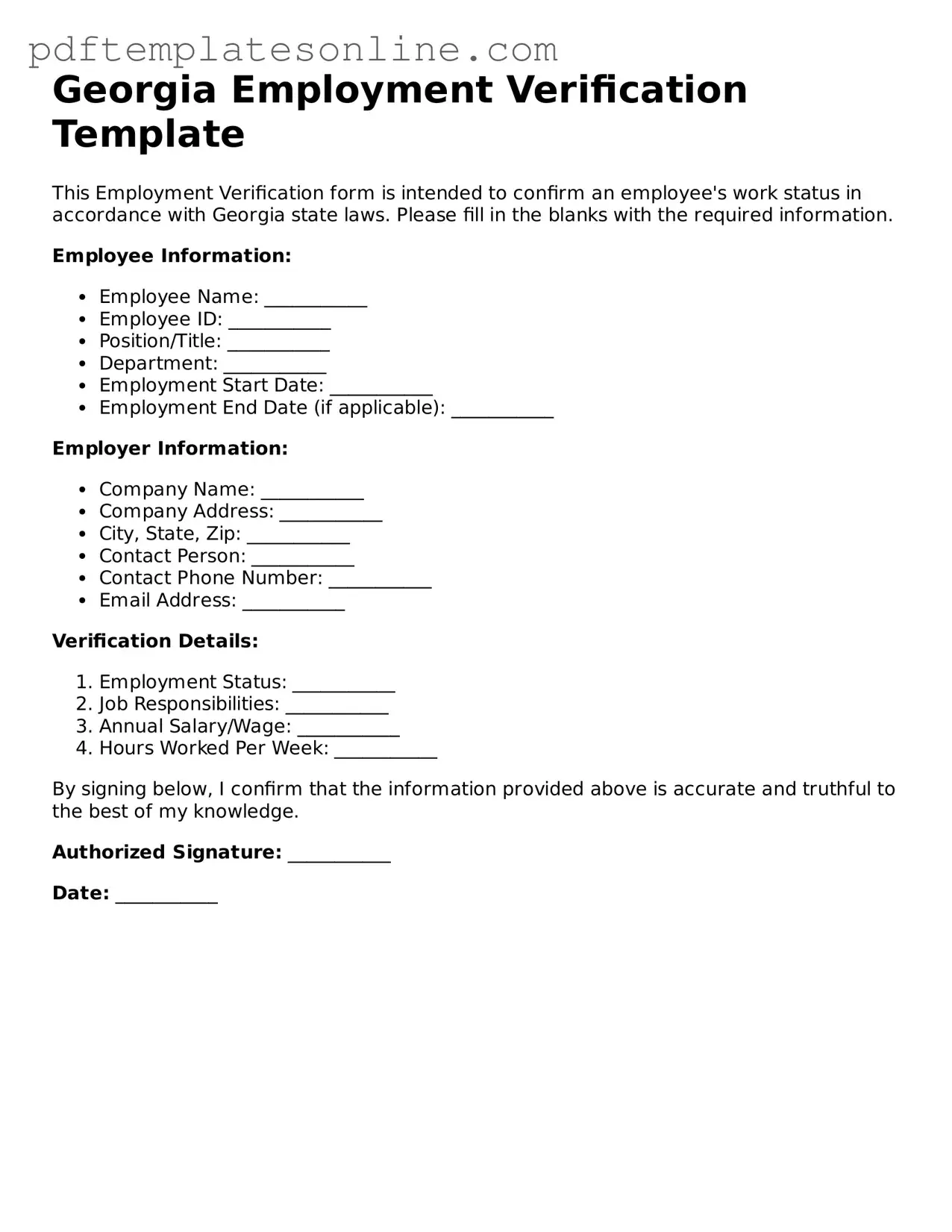Filling out the Georgia Employment Verification form can be straightforward, but many people make common mistakes that can lead to delays or complications. One frequent error is providing incorrect personal information. This includes misspellings of names or inaccuracies in Social Security numbers. Such mistakes can create confusion and hinder the verification process.
Another common mistake involves omitting necessary details about employment. Individuals often forget to include the start and end dates of their employment. This information is crucial for verifying work history, and leaving it out can lead to incomplete verification.
Inaccurate job titles also pose a problem. Sometimes, people list a title that does not match what is on official records. This discrepancy can raise questions and slow down the verification process. It’s essential to ensure that the job title accurately reflects the position held during employment.
Additionally, people may fail to provide the correct contact information for their former employers. If the verification form does not include a valid phone number or email address, it can be challenging for the verifying party to reach out for confirmation. This can further delay the process.
Another mistake is not signing the form. A signature is often required to validate the information provided. Without a signature, the form may be considered incomplete and could be rejected, causing further delays.
Some individuals also overlook the importance of providing a clear reason for the verification request. Whether it’s for a job application, loan approval, or another purpose, including this context can facilitate a smoother verification process.
Finally, failing to review the entire form before submission can lead to overlooked errors. Taking a moment to double-check all entries can save time and prevent unnecessary complications. A careful review ensures that all information is accurate and complete.
